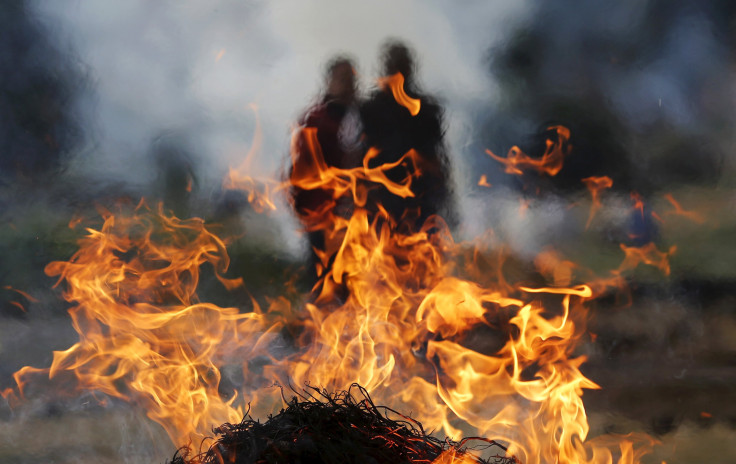Nepal Quake Further Cripples Already Ravaged Economy; Could Take A Hit Of Up To $10B, Says US Geological Survey

Nepal had been zealously striving to uplift itself from being a “least developed” nation to that of a “developing country” by 2022. But with the massive 7.8-magnitude earthquake recently, this aspiration could experience a slowdown, if not all together a total crumble. The US Geological Survey estimated, the cost of the disaster to Nepal’s economy could reach $10 billion, further crippling what already is a ravaged economy.
Nepal relies on tourism to get by. But already, nations including the United States, Britain, Australia, New Zealand and India, have issued travel advisories telling citizens against travel to Nepal. Their respective warnings stated that all non-essential travel to Nepal might as well be cancelled because "infrastructure is fragile and access to basic resources, including health care, could be limited."
For the foreseeable future, "there is high risk to your safety in Nepal," the warning from the New Zealand Foreign Affairs and Trade Commission encapsulated it perfectly.
Mukesh Khanal, an economist who works in Nepal’s international development sector, told Quartz India, the massive quake has pushed the Nepalese people and its economy “50 years back to the past, in terms of infrastructural damage alone.” Many of the so-called propellers of future growth were ruined, such as the highways and the Himalayan lifeline, he said. Also worth mentioning is possible damage to many of Nepal’s hydro-tunneling projects. “They will have to be torn down and rebuilt, which means reduced electricity production for some years.”
YouTube/Catholic News Service
The USGS said the cost of the natural disaster could be between $1 billion and $10 billion. This figure, according to the World Bank, is already half the country’s gross domestic product.
For the past 20 years, Nepal reworked on its economic strategy to build its service sector – tourism, hotels and restaurants, trade, construction and real estate – and have it contribute more to the overall GDP than the agricultural sector. Data obtained by Quartz India showed that of Nepal’s $19 billion economy, only 33.7 percent came from agriculture, while the services sector gave 52.2 percent. Other industries gave the remainder of 14 percent.
“Tourism provides more than half a million jobs for the Nepalese,” Alok K Bohara, an economics professor at the University of New Mexico, and founding director of the Nepal Study Centre, said. Unfortunately, the major 7.8-magnitude earthquake impacted a lot of the country’s major tourism attractions.
The iconic 19th-century tower Dharahara was razed to the ground. Mount Everest could become a dreaded destination for some years. Bohara said the quake has affected 25 to 27 mountainous districts regarded as popular tourism destinations. What’s more, of the seven UNESCO World Heritage sites found in Nepal, four have been badly damaged.
“Kathmandu is central to the nation’s economy, and it’s crippled,” Madhukar SJB Rana, a former finance minister, told Bloomberg. “The extent of the impact depends both on the magnitude of the disaster but also on the resources and capacity to cope. We don’t have that.”
For the latest on relief efforts on the Nepal quake, click here.
To report problems or to leave feedback about this article, email: e.misa@ibtimes.com.au.




















